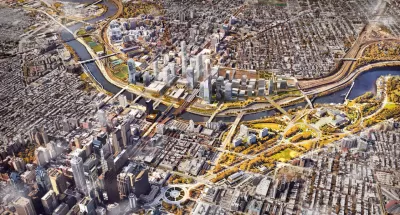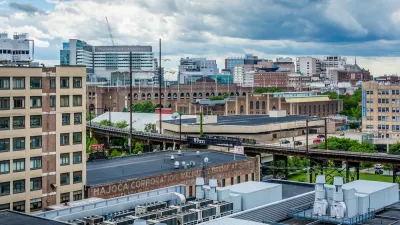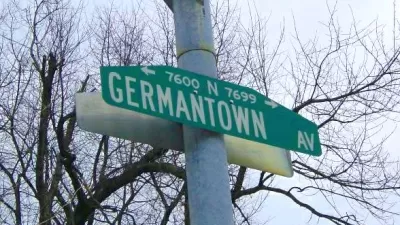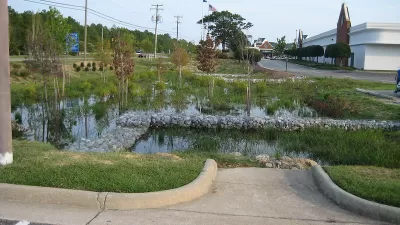Planners have completed a two-year study of the area around the 30th Street Station in the University City neighborhood in Philadelphia.

Jacob Adelman reports: "Amtrak and its partners in the proposed redevelopment of a massive swath around 30th Street Station in University City say the decades-long plan - including partially capping the adjacent rail yard - will involve $6.5 billion in infrastructure funding and private investment."
The financial assessment included in a planning document released this week for the 175-acre site extending northeast from 30th Street Station. Amtrak, Drexel University, Brandywine Realty Trust, SEPTA, and PennDot completed the 30th Street Station District Plan over two years at a cost of $5.25 million.
The 35-year plan lays out a vision for a dense urban neighborhood, with "18 million square feet of new development, the equivalent of nearly 15 new Comcast Towers, including enough housing to accommodate up to 10,000 residents. The commercial space includes about 1.2 million square feet planners hope will be occupied by a single corporate, commercial, or institutional tenant that will anchor the development…"
FULL STORY: $6.5B price tag for 35-year University City overhaul

Manufactured Crisis: Losing the Nation’s Largest Source of Unsubsidized Affordable Housing
Manufactured housing communities have long been an affordable housing option for millions of people living in the U.S., but that affordability is disappearing rapidly. How did we get here?

Americans May Be Stuck — But Why?
Americans are moving a lot less than they once did, and that is a problem. While Yoni Applebaum, in his highly-publicized article Stuck, gets the reasons badly wrong, it's still important to ask: why are we moving so much less than before?

Using Old Oil and Gas Wells for Green Energy Storage
Penn State researchers have found that repurposing abandoned oil and gas wells for geothermal-assisted compressed-air energy storage can boost efficiency, reduce environmental risks, and support clean energy and job transitions.

Updating LA’s Tree Rules Could Bring More Shade to Underserved Neighborhoods
A new USC study finds that relaxing Los Angeles’ outdated tree planting guidelines could significantly expand urban tree canopy and reduce shade disparities in lower-income neighborhoods, though infrastructure investments are also needed.

California's Canal Solar Projects Aim to Conserve Resources and Expand Clean Energy
California’s Project Nexus has begun generating electricity from solar panels installed over irrigation canals, with researchers and state agencies exploring statewide expansion to conserve water and boost clean energy production.

HHS Staff Cuts Gut Energy Assistance Program
The full staff of a federal program that distributes heating and cooling assistance for low-income families was laid off, jeopardizing the program’s operations.
Urban Design for Planners 1: Software Tools
This six-course series explores essential urban design concepts using open source software and equips planners with the tools they need to participate fully in the urban design process.
Planning for Universal Design
Learn the tools for implementing Universal Design in planning regulations.
Heyer Gruel & Associates PA
City of Moreno Valley
Institute for Housing and Urban Development Studies (IHS)
City of Grandview
Harvard GSD Executive Education
Salt Lake City
NYU Wagner Graduate School of Public Service
City of Cambridge, Maryland





























